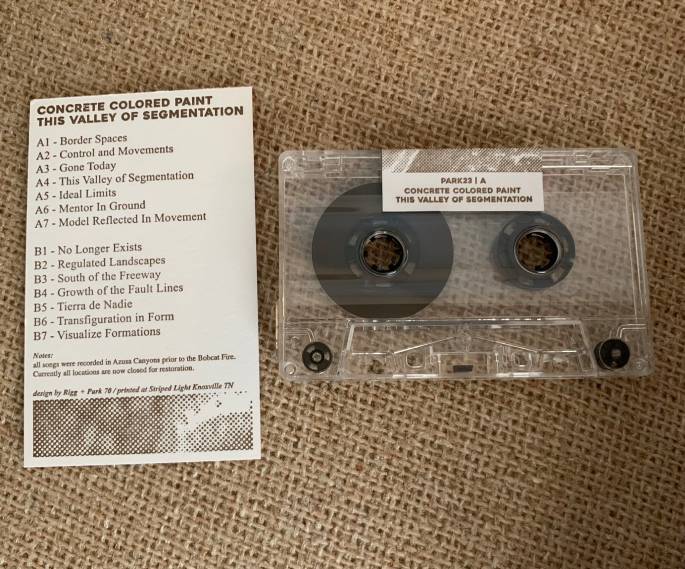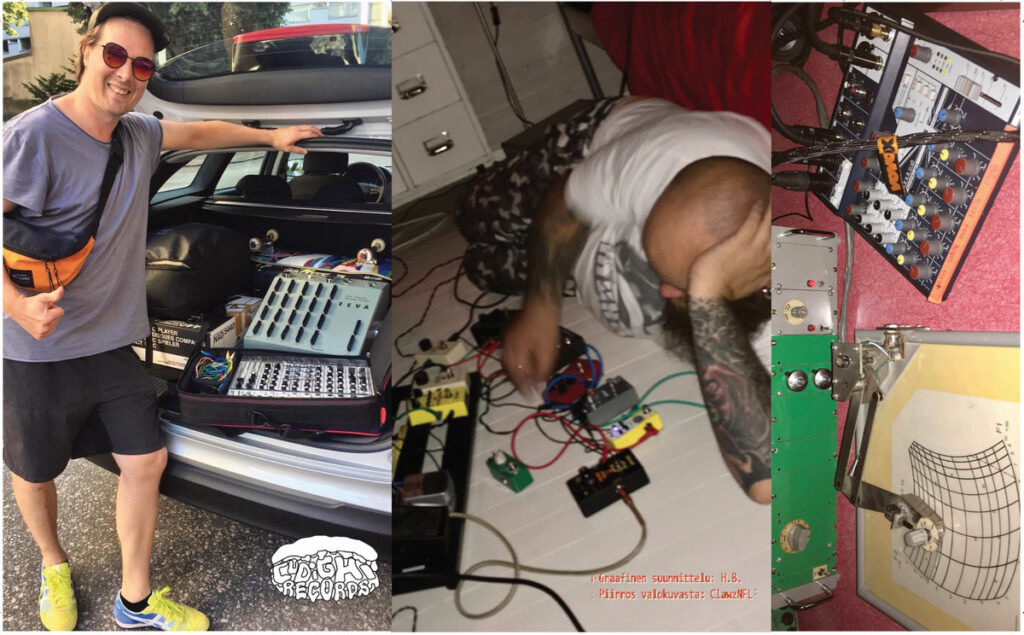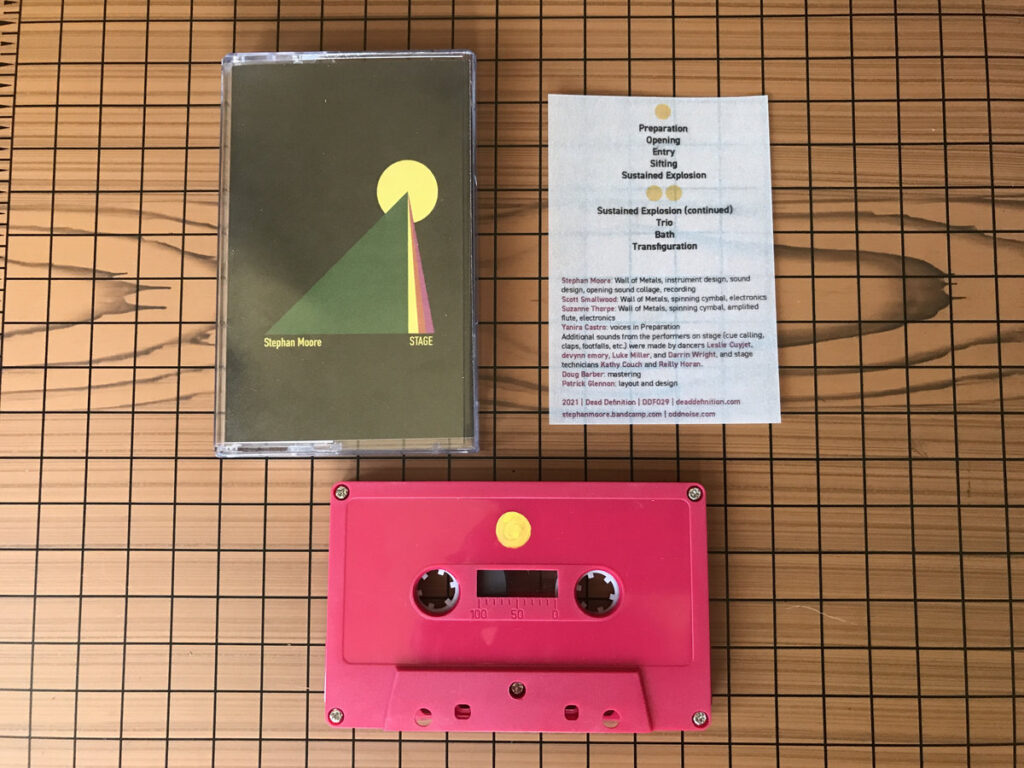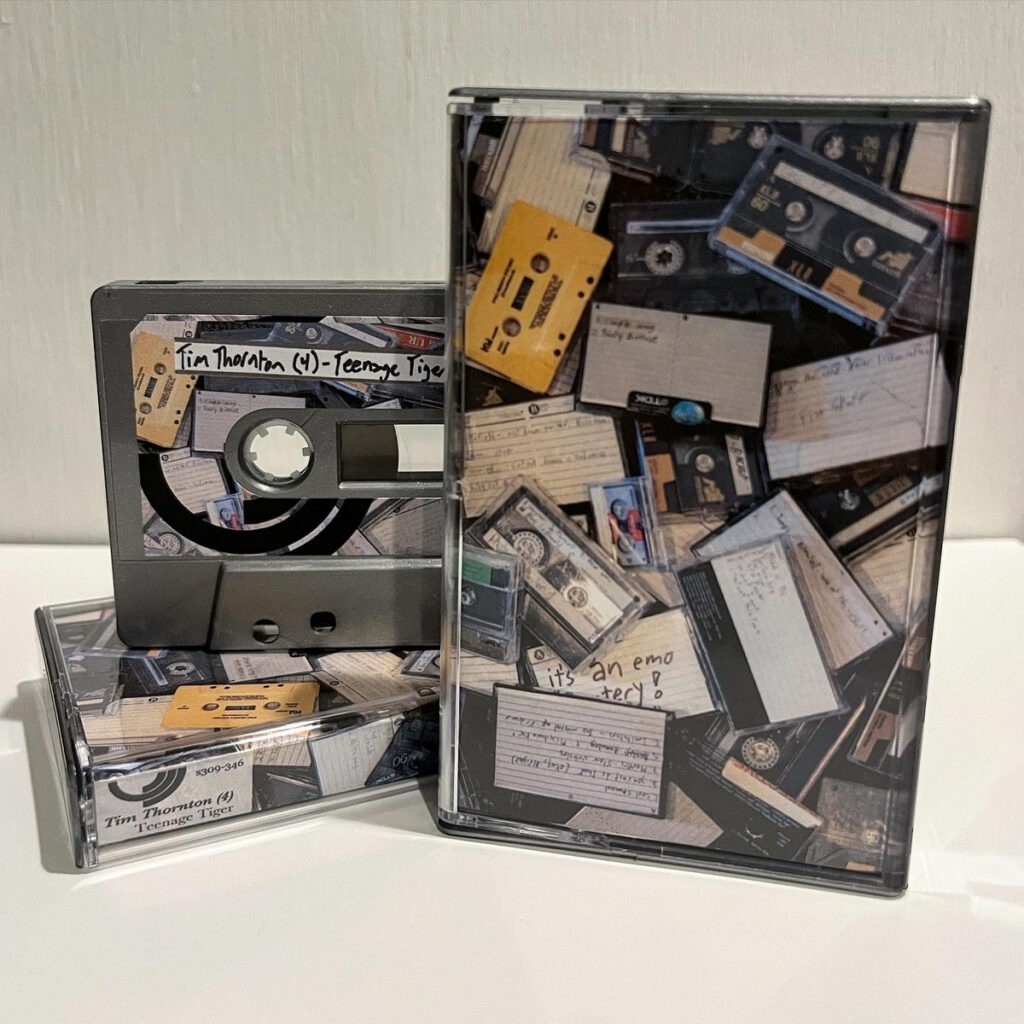Uli Federwisch & Chip Perkins – Visiting Places (Learning by Listening Vol. 5)
6.24.22 by Matty McPherson
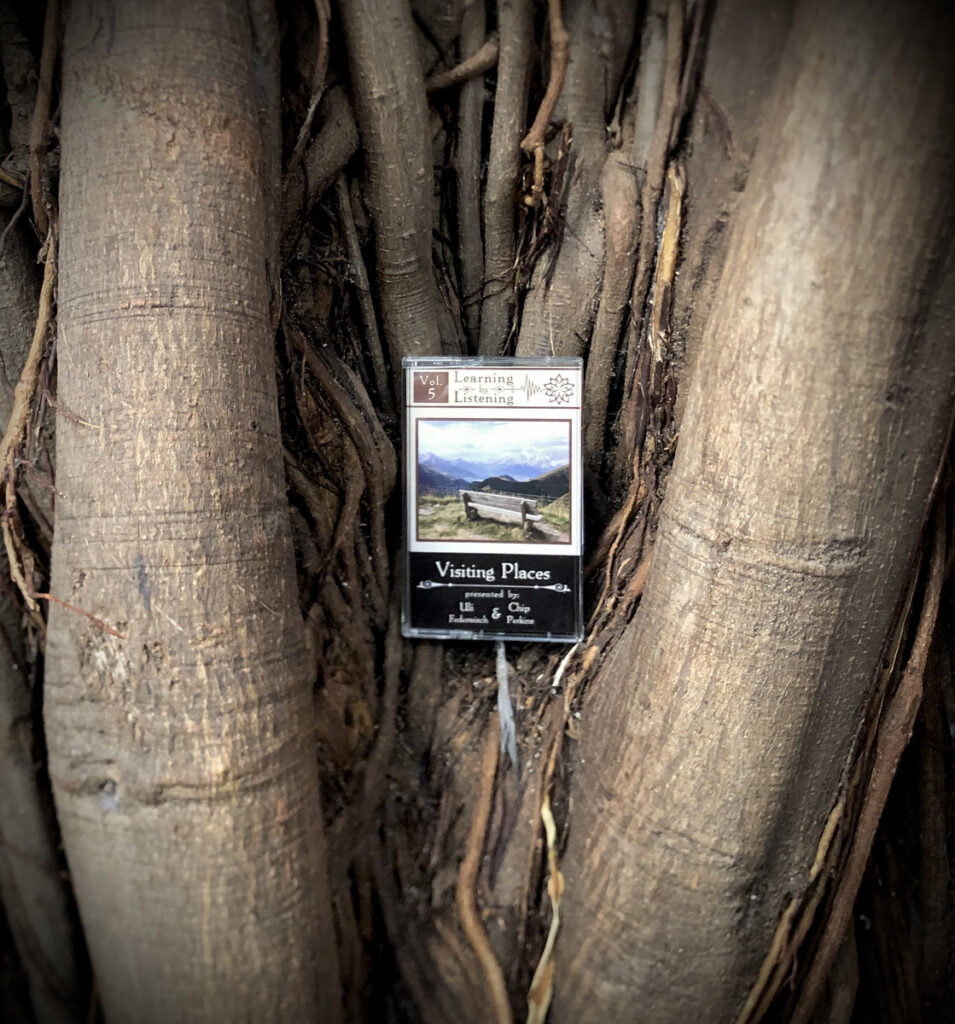
They (aka PUBLIC LIBRARIES) like to advertise that you can go to a library and “jumpstart your future” by watching a bunch of Great Courses about pirates, facists, and uhhh… integrated calculus. I mean I guess that’s good enough to like get a GED or a diploma from Crazy Go Nuts University, but I just don’t feel like that truly does justice for what today’s feeble-eyed audiences are in need of. They should be learning with their ears, LISTENING to important lessons and concepts! Some people might just say “isn’t that a podcast?” But not Strategic Tape Reserve! Even if libraries think cassettes are outdated (or too scary to file under the Dewey Decimal System), the STR has been innovating in learning arenas where results had been practically stagnate. “Learning by Listening is an educational, instructive cassette series designed to bring the information of the world into your home, and your brain,”. It’s a simple approach that has led to DOZENS of degrees (these tape runs are few, because the value of these degrees are akin to liquid gold), tens of armchair critical thoughts/forum posts, and at least 8 tape releases to date.
Now, I’ve been out the STR loop for a while (Eamon, you really outdid yourself with Bellectronic!). Yet, as a clerk with Dewey Decimal number knowledge, I felt that I could help analyze Vol. 5 Visiting Places and provide insights for future knowledge enthusiasts. A Dewey Decimal Classification of 910, for “geography and travel” is a sufficient starting place for this tape release. It’s the work of Uli Federwisch, the Secretary-General of the Prüm-Eupen Partnership For Success and has visited many places both inside of Germany and abroad.” Hmm, maybe its a 914.3 situation–ya know for the German/Belgium area? Wait a sec–it says here “Chip Perkins has submitted demo reels to several well-respected voice talent agencies and expects to hear back from them soon”. Last time I checked we were filing voice talent demo reals somewhere in the 790s. Goodness! Is this even catalogable?! Okay maybe we should focus on the listening at hand–Federwisch really likes to play with the synthesizer. And when I got those Autechre cds from the library, they were filed under 786.74 for “synthesizers, electronic music.” Technically, Visiting Places fits that description, but you and I both saw that bench on the cover, we know this is an experience of real human travels.
Visitng Places’ is the designated length of a super-sized Rick Steves Europe episode. Now, I watch a lot of Rick Steves on weekends. It used to be Bob Ross, but my folks saw the documentary on his life and are appalled by the cottage industry based on his likeness. Rick Steves is a pretty good compromise because it fulfills their dreams of going to Europe and my fascination with his “blunt as fuck” (bro loves his doobies!) nicecore aesthetic. A sizeable chunk of Perkins’ informative monologues struck me as warped inversions of Rick Steves’ charming historical tidbits of European history and culture. In the hands of Perkins, they become brilliant distillations of STR’s lore and fever-dream Europe that us Americans so rarely have any real understanding of. Also they are paired with Federwisch’s uncanny knack for pulling out synth textures and bonkers sounds that emphatically parallel the journey Perkins pulls us down. It can be funky or ethereal; blissful or deranged. It’s really all about how you learn by listening.
Visiting Places is undeniably an execution of the “weird and eerie” aesthetic, outside of our perceptions. Our journey will start at a bench on the Belgium/German border, playing a flute. No, we don’t know how we got here. We just must traverse and figure what is real and imagined. We’ll encounter adult-sized tricycles, with decorative cladding and displaying scenes from popular movies. To describe its limitations and otherworldly-ness (it sits on a track between the two countries’ borders) would fail you, dear reader. We’ll visit a model train museum where budget cuts have truly put things on the fritz. We’ll move like a tightrope walker. We’ll lay down and count back from 8 and come to a wind park, truly considering how wind turbines could become giant fans! We’ll ponder the results of referendums that destroyed all maps of the local village. The village residents though, they speak in a language that is “profoundly beautiful”. All the while, Federwisch will continue to take every quip or turn of phrase and turn it into an apt sound.
As I read of future civil wars and think of fractured borders, this tape produces its own solace. Federwisch & Perkins achieve a radiant energy that begets questions to answers that aren’t even acknowledged within this tape, allowing a listener to truly ponder the places they visit. But let’s not dwell on that. Just merely tap in for five minutes, and before you’ll realize it you’ve been been on a journey of your own for the past 40.
Professionally dubbed C40 audio cassette. Edition of fifty something from Strategic Tape Reserve’s Bandcamp Page.

